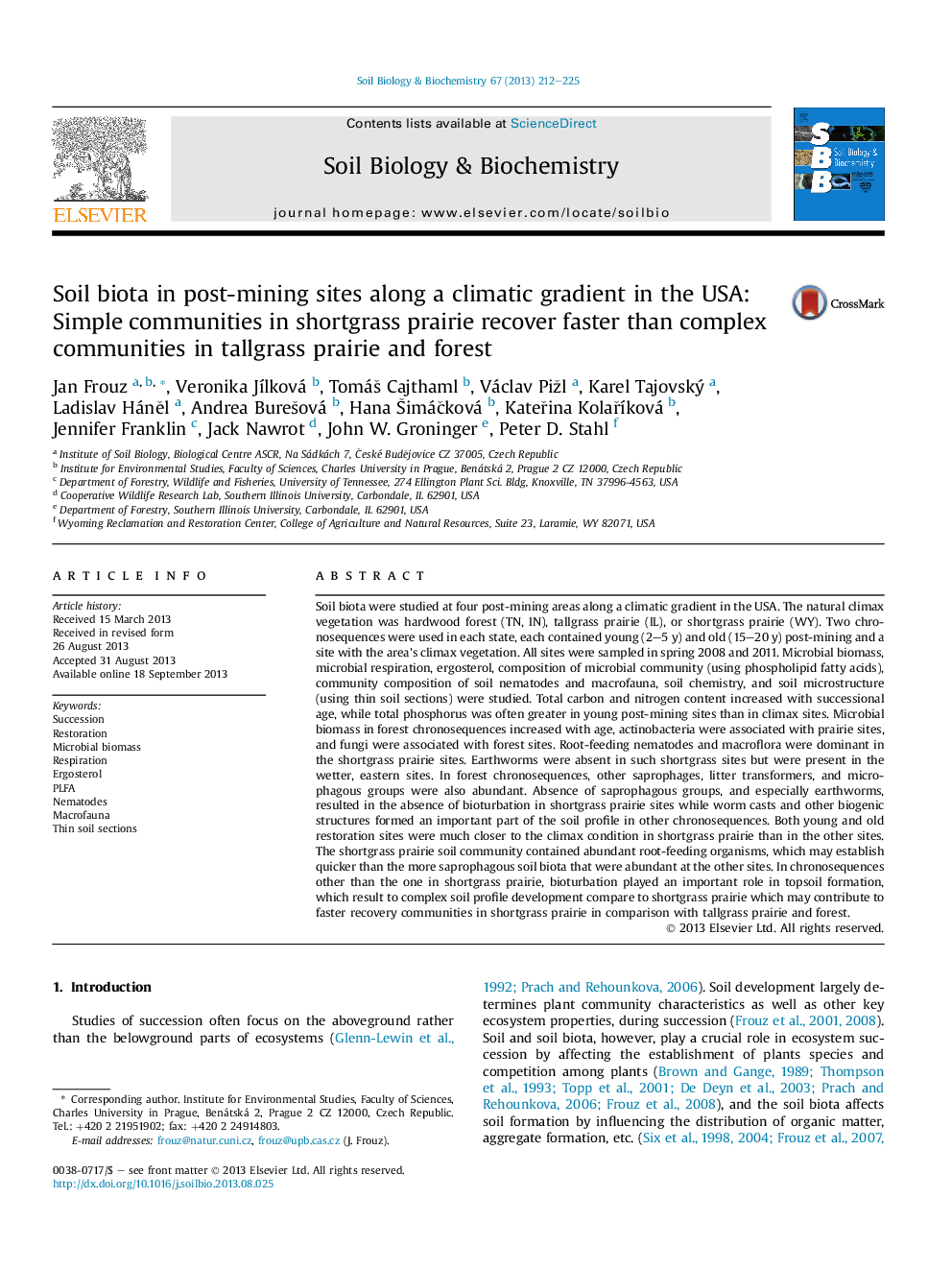| Article ID | Journal | Published Year | Pages | File Type |
|---|---|---|---|---|
| 8365116 | Soil Biology and Biochemistry | 2013 | 14 Pages |
Abstract
Soil biota were studied at four post-mining areas along a climatic gradient in the USA. The natural climax vegetation was hardwood forest (TN, IN), tallgrass prairie (IL), or shortgrass prairie (WY). Two chronosequences were used in each state, each contained young (2-5Â y) and old (15-20Â y) post-mining and a site with the area's climax vegetation. All sites were sampled in spring 2008 and 2011. Microbial biomass, microbial respiration, ergosterol, composition of microbial community (using phospholipid fatty acids), community composition of soil nematodes and macrofauna, soil chemistry, and soil microstructure (using thin soil sections) were studied. Total carbon and nitrogen content increased with successional age, while total phosphorus was often greater in young post-mining sites than in climax sites. Microbial biomass in forest chronosequences increased with age, actinobacteria were associated with prairie sites, and fungi were associated with forest sites. Root-feeding nematodes and macroflora were dominant in the shortgrass prairie sites. Earthworms were absent in such shortgrass sites but were present in the wetter, eastern sites. In forest chronosequences, other saprophages, litter transformers, and microphagous groups were also abundant. Absence of saprophagous groups, and especially earthworms, resulted in the absence of bioturbation in shortgrass prairie sites while worm casts and other biogenic structures formed an important part of the soil profile in other chronosequences. Both young and old restoration sites were much closer to the climax condition in shortgrass prairie than in the other sites. The shortgrass prairie soil community contained abundant root-feeding organisms, which may establish quicker than the more saprophagous soil biota that were abundant at the other sites. In chronosequences other than the one in shortgrass prairie, bioturbation played an important role in topsoil formation, which result to complex soil profile development compare to shortgrass prairie which may contribute to faster recovery communities in shortgrass prairie in comparison with tallgrass prairie and forest.
Related Topics
Life Sciences
Agricultural and Biological Sciences
Soil Science
Authors
Jan Frouz, Veronika JÃlková, TomáÅ¡ Cajthaml, Václav Pižl, Karel Tajovský, Ladislav HánÄl, Andrea BureÅ¡ová, Hana Å imáÄková, KateÅina KolaÅÃková, Jennifer Franklin, Jack Nawrot, John W. Groninger, Peter D. Stahl,
